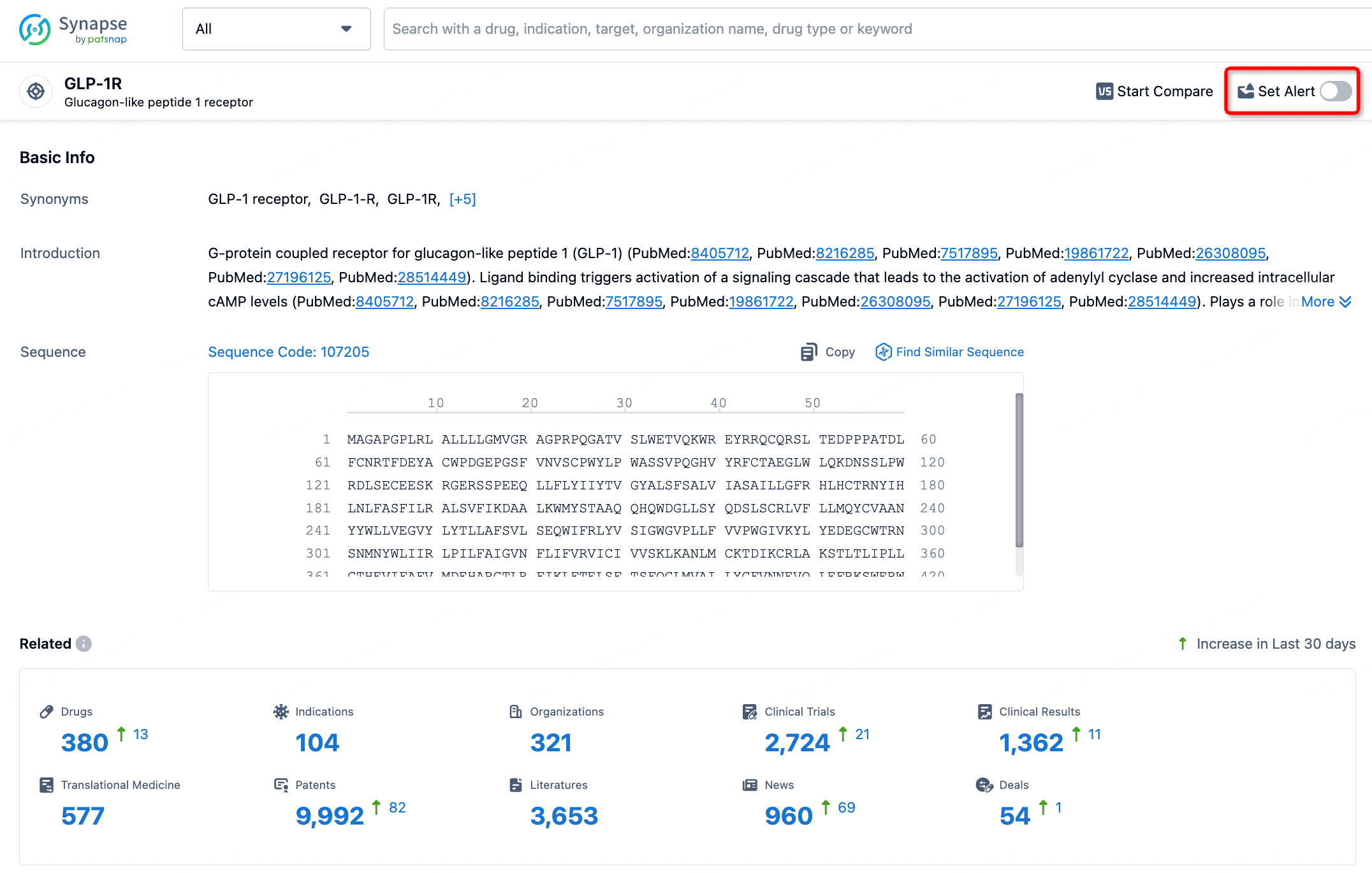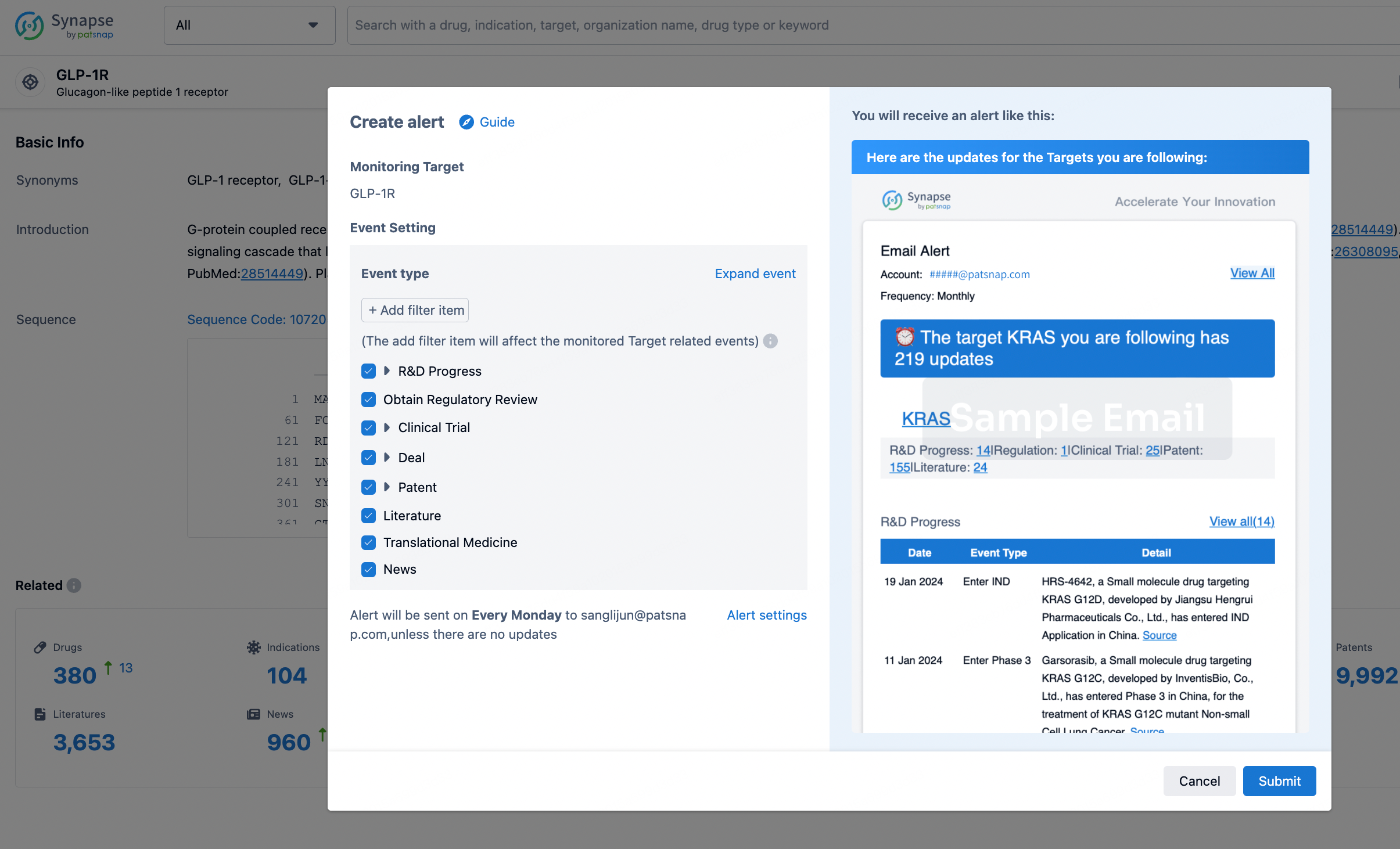Request Demo
What are δ opioid receptor modulators and how do they work?
21 June 2024
In recent years, the exploration of δ opioid receptor modulators has garnered significant attention within the field of pharmacology. These modulators present a promising avenue for the development of new treatments for a variety of conditions, primarily due to their unique interaction with the δ opioid receptor (DOR). This receptor, one of the three main classes of opioid receptors, plays a critical role in modulating pain, mood, and other physiological processes.
The δ opioid receptor is a G protein-coupled receptor (GPCR) that, when activated, can influence various intracellular signaling pathways. δ opioid receptor modulators can act as agonists, antagonists, or partial agonists, each with distinct effects on receptor activity. Agonists bind to the receptor and activate it, mimicking the action of endogenous opioid peptides like enkephalins. This activation typically results in analgesic effects and can also influence mood and neuroprotection. Antagonists, on the other hand, bind to the receptor but do not activate it; instead, they block the receptor's interaction with endogenous opioids and other agonists, which can be useful in countering the effects of opioid overdose or addiction. Partial agonists produce a moderate response compared to full agonists, offering a balanced effect that could be beneficial in managing conditions requiring nuanced modulation of the opioid system.
The efficacy and safety profile of δ opioid receptor modulators depend on their specificity and affinity for the δ receptor as opposed to the other opioid receptors, namely the μ and κ receptors. High specificity for the δ receptor is crucial to minimize the side effects typically associated with μ opioid receptor activation, such as respiratory depression and high addiction potential. Thus, a well-targeted δ opioid receptor modulator could provide pain relief and other therapeutic benefits with a reduced risk of adverse effects.
The applications of δ opioid receptor modulators are diverse, reflecting their broad physiological influence. One of the primary uses is in pain management, where δ agonists have shown potential to provide analgesia without the severe side effects linked to μ opioid receptor agonists like morphine. This makes δ receptor agonists an appealing alternative for chronic pain treatment, especially in patients who are at risk of developing dependency or experiencing harmful side effects from traditional opioids.
In addition to pain management, δ opioid receptor modulators are being researched for their role in mood disorders. There is mounting evidence suggesting that δ receptor agonists possess antidepressant and anxiolytic properties. This has opened up new possibilities for treating conditions such as major depressive disorder and anxiety disorders. The modulation of δ receptors could potentially offer a novel mechanism of action distinct from conventional antidepressants, which typically target serotonin or norepinephrine systems.
Beyond pain and mood disorders, δ opioid receptor modulators are also being investigated for their neuroprotective effects. Research indicates that δ receptor activation may help protect neurons from damage caused by ischemia or neurodegenerative diseases like Alzheimer's and Parkinson's. By promoting cellular survival and reducing inflammation, these modulators could play a significant role in preventing or slowing the progression of various neurological conditions.
Moreover, some studies have highlighted the potential use of δ receptor antagonists in the treatment of substance abuse disorders. By blocking the δ receptors, these antagonists could help mitigate the reinforcing effects of addictive substances, thereby aiding in addiction recovery efforts.
In conclusion, δ opioid receptor modulators represent a versatile and promising class of compounds with potential applications spanning pain management, mood disorder treatment, neuroprotection, and addiction therapy. As research continues to unveil the complexities of δ opioid receptor interactions, the development of highly specific and effective modulators holds the promise of improving therapeutic outcomes for a wide range of conditions. The future of δ opioid receptor modulators looks bright, with ongoing studies paving the way for innovative treatments that could significantly enhance patient care and quality of life.
The δ opioid receptor is a G protein-coupled receptor (GPCR) that, when activated, can influence various intracellular signaling pathways. δ opioid receptor modulators can act as agonists, antagonists, or partial agonists, each with distinct effects on receptor activity. Agonists bind to the receptor and activate it, mimicking the action of endogenous opioid peptides like enkephalins. This activation typically results in analgesic effects and can also influence mood and neuroprotection. Antagonists, on the other hand, bind to the receptor but do not activate it; instead, they block the receptor's interaction with endogenous opioids and other agonists, which can be useful in countering the effects of opioid overdose or addiction. Partial agonists produce a moderate response compared to full agonists, offering a balanced effect that could be beneficial in managing conditions requiring nuanced modulation of the opioid system.
The efficacy and safety profile of δ opioid receptor modulators depend on their specificity and affinity for the δ receptor as opposed to the other opioid receptors, namely the μ and κ receptors. High specificity for the δ receptor is crucial to minimize the side effects typically associated with μ opioid receptor activation, such as respiratory depression and high addiction potential. Thus, a well-targeted δ opioid receptor modulator could provide pain relief and other therapeutic benefits with a reduced risk of adverse effects.
The applications of δ opioid receptor modulators are diverse, reflecting their broad physiological influence. One of the primary uses is in pain management, where δ agonists have shown potential to provide analgesia without the severe side effects linked to μ opioid receptor agonists like morphine. This makes δ receptor agonists an appealing alternative for chronic pain treatment, especially in patients who are at risk of developing dependency or experiencing harmful side effects from traditional opioids.
In addition to pain management, δ opioid receptor modulators are being researched for their role in mood disorders. There is mounting evidence suggesting that δ receptor agonists possess antidepressant and anxiolytic properties. This has opened up new possibilities for treating conditions such as major depressive disorder and anxiety disorders. The modulation of δ receptors could potentially offer a novel mechanism of action distinct from conventional antidepressants, which typically target serotonin or norepinephrine systems.
Beyond pain and mood disorders, δ opioid receptor modulators are also being investigated for their neuroprotective effects. Research indicates that δ receptor activation may help protect neurons from damage caused by ischemia or neurodegenerative diseases like Alzheimer's and Parkinson's. By promoting cellular survival and reducing inflammation, these modulators could play a significant role in preventing or slowing the progression of various neurological conditions.
Moreover, some studies have highlighted the potential use of δ receptor antagonists in the treatment of substance abuse disorders. By blocking the δ receptors, these antagonists could help mitigate the reinforcing effects of addictive substances, thereby aiding in addiction recovery efforts.
In conclusion, δ opioid receptor modulators represent a versatile and promising class of compounds with potential applications spanning pain management, mood disorder treatment, neuroprotection, and addiction therapy. As research continues to unveil the complexities of δ opioid receptor interactions, the development of highly specific and effective modulators holds the promise of improving therapeutic outcomes for a wide range of conditions. The future of δ opioid receptor modulators looks bright, with ongoing studies paving the way for innovative treatments that could significantly enhance patient care and quality of life.
How to obtain the latest development progress of all targets?
In the Synapse database, you can stay updated on the latest research and development advances of all targets. This service is accessible anytime and anywhere, with updates available daily or weekly. Use the "Set Alert" function to stay informed. Click on the image below to embark on a brand new journey of drug discovery!
AI Agents Built for Biopharma Breakthroughs
Accelerate discovery. Empower decisions. Transform outcomes.
Get started for free today!
Accelerate Strategic R&D decision making with Synapse, PatSnap’s AI-powered Connected Innovation Intelligence Platform Built for Life Sciences Professionals.
Start your data trial now!
Synapse data is also accessible to external entities via APIs or data packages. Empower better decisions with the latest in pharmaceutical intelligence.


